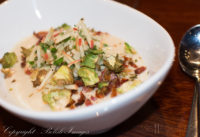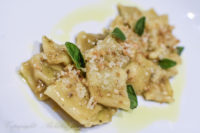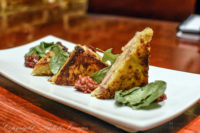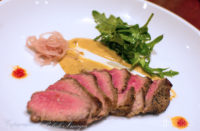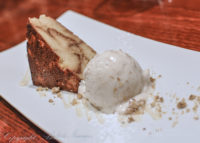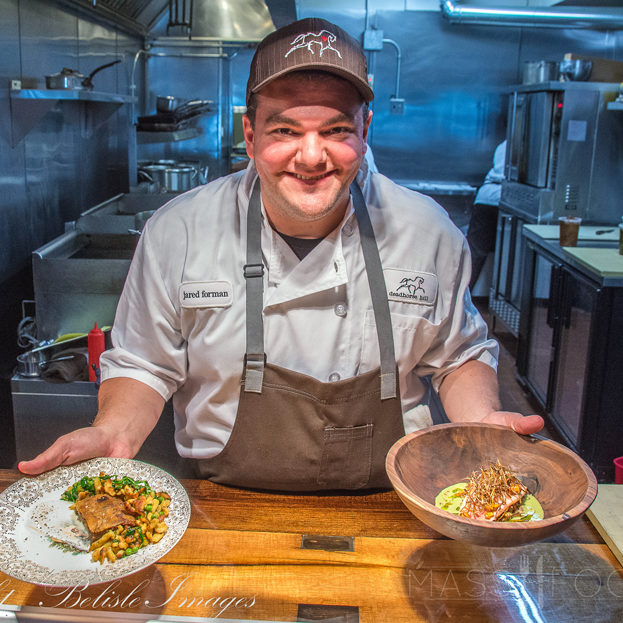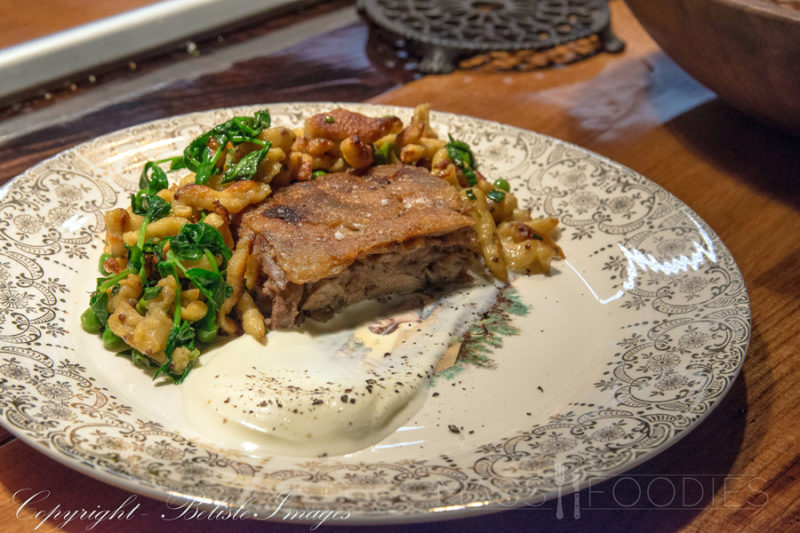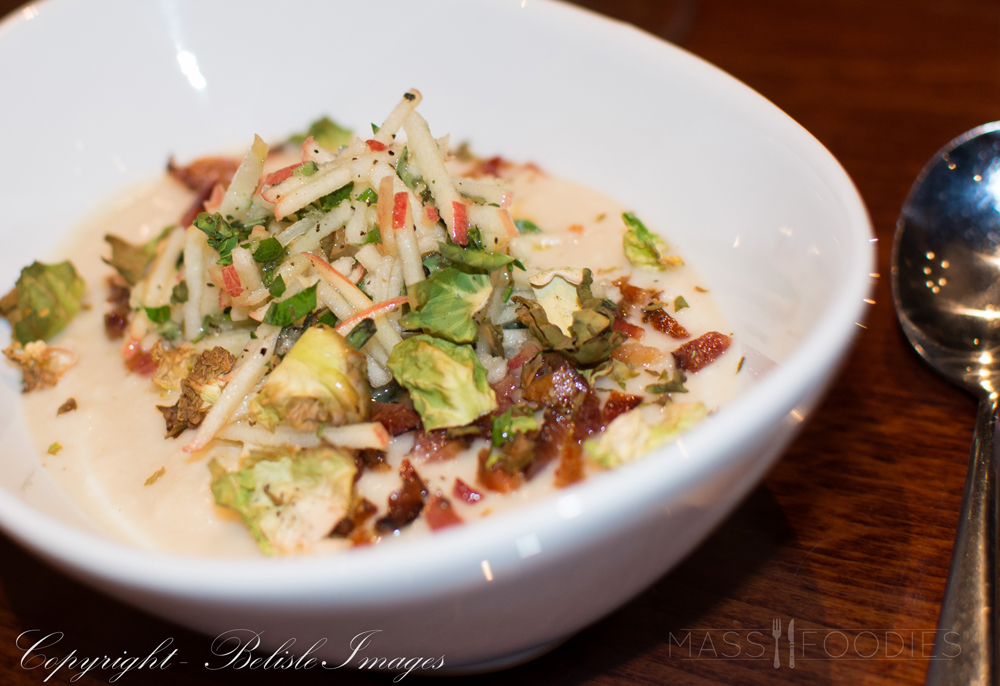
In Japanese, it’s called omakase. In French, menu dégustation. In the US, we call it a tasting menu. They are all basically the same thing: a meal consisting of a series of dishes selected by the chef presented on a smaller scale over five to seven (or more) courses for a set price. Sometimes each course is spelled out on the menu, other times you’re flying blind in the chef’s hands. Usually there are wine or drink pairings available. But no matter what it is called or how it is presented, tasting menus are a signature feature of restaurants around the world and have resulted in some of the most memorable dishes and meals of my life. The French Laundry in Napa, Sushi Yasuda in New York City, Arpège in Paris… But never in Worcester. Ever. For one reason: No one has really offered a tasting menu here.
Until now. At Lock 50 under chef Tim Russo. And the appearance and connection with its customers make it clear Worcester’s chef and restaurant scene hasn’t just arrived – it has evolved.
To be clear, a tasting menu is NOT the same as a prix fixe menu. A prix fixe menu is simply an a la carte menu of several courses served at a fixed price. You choose the dishes and no matter what you order, the prix fixe cost is what you pay (like during Worcester Restaurant Week). Maybe the closest thing to compare a tasting menu to before Lock 50 discretely started offering theirs in October would be a wine or beer dinner at any number of Worcester restaurants or the Chef’s Best events Mass Foodies puts on. But the former is designed around the beverages (usually from one vintner or supplier), and both happen only a few times a year. Snooze you lose.
Tasting menus like the one at Lock 50 are available every day. They are ever changing flights of fancy and flavor that challenge chefs – and thus you – to explore beyond the regular menu and engage your creative sides. This is not eating for sustenance – it is eating for experience.
The Lock 50 tasting menu is blind – meaning you don’t know what is coming beyond a progression from an appetizer-like starter or two, perhaps a pasta, into more main course style dishes, and finally dessert. Tim Russo is your guide. That requires confidence from him but a willingness on our part to get out of our comfort zones. Many of us are creatures of habit. We want what we want. Russo’s menu asks us to be surprised and try something you never would have ordered and may think we don’t like. Aside from a respect for any allergies or dietary restrictions, you get what you get and don’t get upset.
Is Worcester really ready for this?
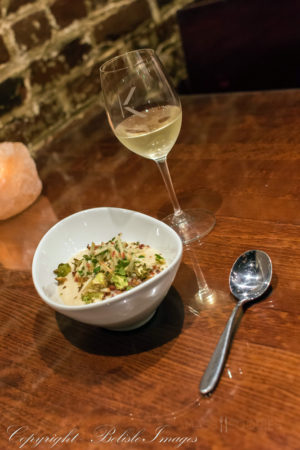
Owner Ed Russo thought so. He visited Charlie Palmer’s Aureole in New York City earlier this year and was blown away by the tasting menu. “Holy shit, Timmy, we are doing this,” he said to his nephew. If you’ve met Ed, you knew Tim had no choice – and we are glad he likes a challenge, because he gets it. He’s clearly letting his mind wander in a good way.
The night we were there, Russo didn’t just nail the flavor landing for our five-course meal – he delivered a menu that was cohesive from start to finish. This was like a fashion collection that had a distinct and consistent point of view. Russo had clearly thought about color, texture, and seasonality not just flavor.
First came a bright and thick celery root soup was topped with apple slaw, crispy Brussels sprout leaves, crumbled bacon, and fresh oregano. It was fall in a bowl. That was followed by agnolotti (a small ravioli-like pasta typical of Piedmont) stuffed with pumpkin and mascarpone and sauce that had a hit of pear. Next Russo showed his playful side with a riff on scrapple – yes, I said scrapple – made with smoked turkey and served with a cranberry mostarda. Heresy perhaps for traditionalists who crave the Pennsylvania Dutch mush, completely unexpected at a place like Lock 50.
If all that sounds as appealing as they looked and tasted know that none of those dishes were part of the regular Lock 50 menu that night in any way. That’s the point of a tasting menu: Rarely do they reflect what anyone can order. On any given day, chefs like Russo may play around with limited ingredients, something they are thinking of adding to the menu, a technique, or just something special they can’t cook to scale.
That doesn’t mean you won’t find echoes of the regular menu in a tasting menu. Our fourth course was a seared tri-tip steak. On the menu, it comes with a red wine demi. On the tasting menu? It was fanned across a soubise sauce. And if you have no clue what soubise is, know I didn’t either. (It’s a cream sauce based on Béchamel with the addition of onion purée and in Russo’s version some roasted garlic.) But that is part of the fun of a tasting menu experience! The “what did you call that?” that precedes learning something new or seeing a different side of a dish you might know. (On other nights, Russo has also riffed on Lock 50’s oil-poached swordfish for the tasting menu.)
What made that tri-tip even better, however, is what I have neglected to mention yet: the wine. Our five-course dinner came with wine pairings. Full disclosure: I am dubious about wine pairings in places I don’t know the wine list or the one picking the wines. I am not sure I would have opted for it had I not been there to write this up. I would have been a fool.
Tommy Studer, who runs the wines for Lock 50, just gets it. His knowledge and pairings had been spot on through three courses but when he poured the Casa Silva Carmenere 2014 (Chile) with its deep dark color, smoky tobacco nose, and hearty tannins with the tri-tip you felt nothing short of joy as two mighty equals in the glass and on the plate elevated each other even higher.
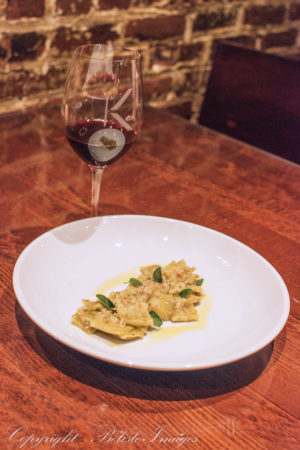
Russo and Struder collaborate beyond well. It is even playful at times as it was during dessert. Russo offered a cinnamon and spice bread pudding on a brown butter sauce with a scoop of house-made brown butter ice cream. Struder didn’t choose a port for his pairing but a Cooper & Thief Red Wine Blend that is aged for three months in bourbon barrels. Drinks like a wine, smells like and hints of a bourbon with distinct vanilla notes. Wow.
Of course, personal attention like this does not come cheaply. While Worcesterites have learned to pay more for quality and the vision of a chef they trust, Lock 50’s tasting menu raises the bar there too. It costs $70 for five courses and $90 for seven courses, $110 and $140 respectively with wine. (This is still below what menus like these cost in Boston. By contrast, the tasting menu at Aureole, which inspired Ed, is $125 for five courses, $148 for seven, and $80 more for each with wine.)
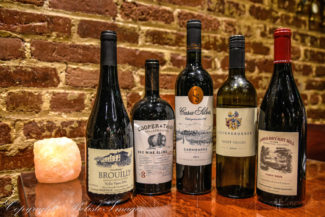
If there is any downside I’m guessing for some people, it won’t have anything to do with the price, wine, or the food. It’s that not having to discuss the menu and leaving yourself in Russo’s and Struder’s hands means you’ll actually have more time to talk to each other and have that conversation match the menu.
Listen, maybe all this discussion of what a tasting menu is and why it is worth it seems passé to some people. Maybe it gets a chuckle with folks I know who live closer to that other bigger city east of here, where I sampled tasting menus at O Ya and Craigie on Main years ago. It surely gets a laugh in New York City where I lived when tasting menus went mainstream there in the 90s. The scene got so overheated, obligatory, and in some cases still mandatory (no a la carte) that Pete Wells in The New York Times complained more than four years ago about being “nibbled to death” by the cult of tasting menus and their small dishes.
Get over yourselves. We are not they.
Maybe the most promising sign of a trend that is finding its own way in Worcester is that Jared Forman of the delightful deadhorse hill has discretely started offering a family-style “horse feast” tasting menu (also blind that allows the entire table to share a tasting experience of dishes on and off the menu for $65 per person or $100 with wine pairings). I say this because Forman comes from New York City and worked at two acclaimed and landmark restaurants: Gramercy Tavern (where there are still tasting menus and have been since Danny Meyer and Tom Colicchio started it in 1994) and Per Se (where Thomas Keller’s team offers only a tasting menu and limited selection in each course for a price you don’t want to know).
I remember how exciting it was in New York City to eat at both these places when they opened and it feels the same way now in Worcester as the city responds differently to its chefs and restaurants and they respond in turn. This is a big step in our culinary evolution.

